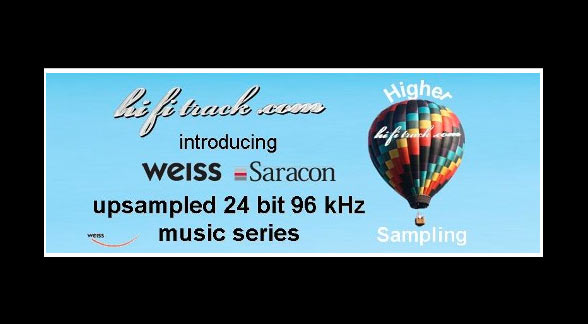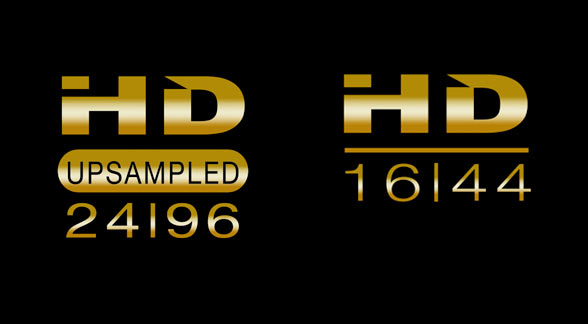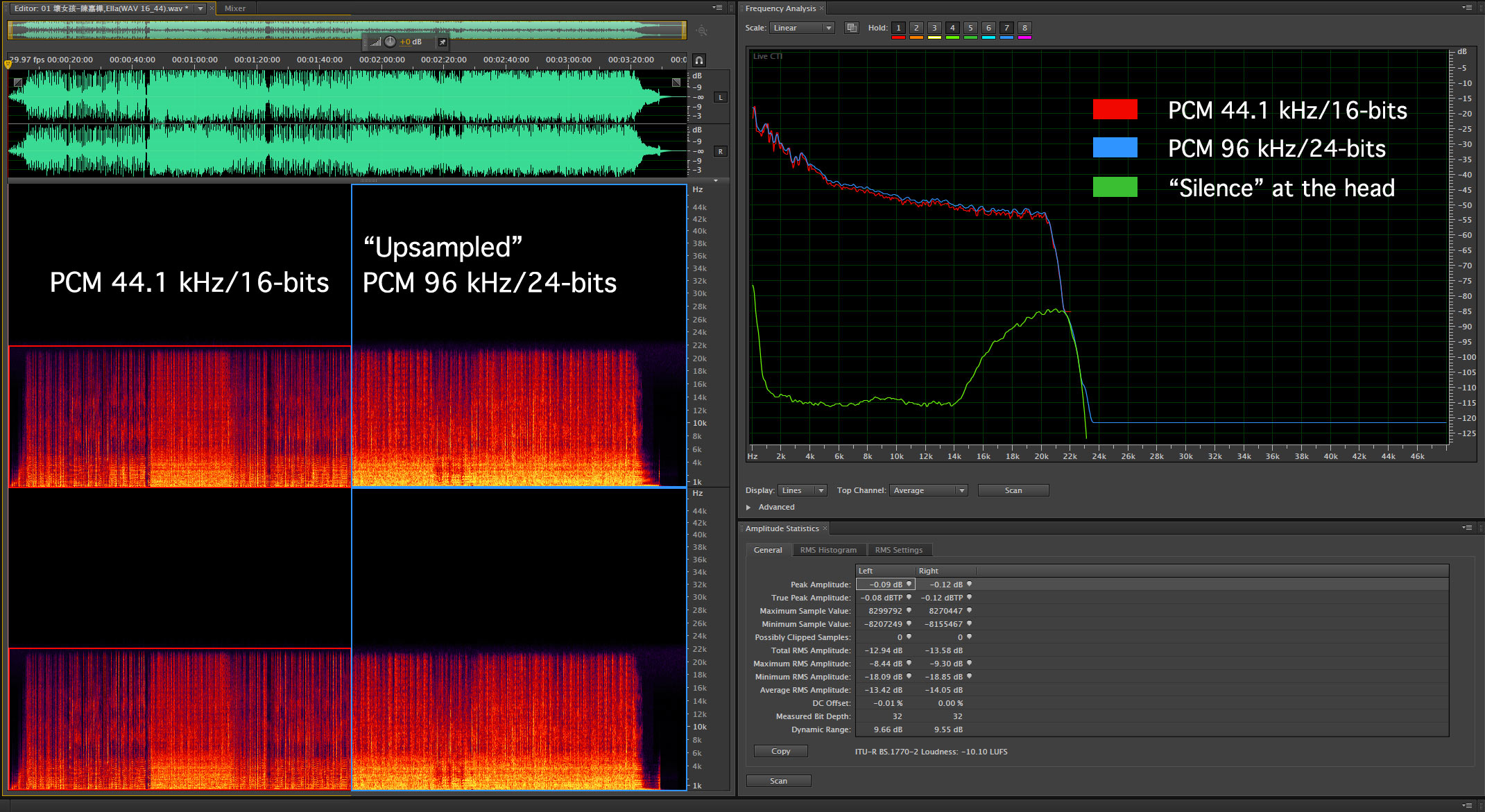HD Upsampled…An Audio Oxymoron
Upsampling is a process by which a lower specification audio file is converted into a higher specification audio file using sophisticated software or hardware. A standard CD resolution 44.1/16-bit selection is run through a Weiss Saracon software upsampler (or other high quality converter) to produce a 96 kHz/24-bit “HD Upsampled” file. The HiFiTrack.com website, an Asian digital music download store, offers a variety of music albums in this format (and other “so-called HD formats”. They have a logo that features the letters “HD” in polished gold with a small gold oval containing the word “upsampled”.
Figure 1 – The HD logos from the HiFiTrack.com site.
The idea of upsampling has been around for a long time. In the early days of the compact disc format, consumer electronics manufacturers used semiconductors that would “upsample” a CD from 44.1 kHz to integer multiples of that number. There were machines that were capable of 2X, 4X or even 8X and 16X upsampling. This process only addresses the sampling rate and doesn’t nothing for the word length per sample. The word length of a Redbook CD remains at 16 bits.
The simplest way to understand upsampling is to think of a new “virtual” sample being inserted between two actual samples. The amplitude of the sample is calculated by averaging the two adjacent known samples and the timing of the new “virtual sample” places it exactly in between those adjacent samples; thus the designation of 2X the original sample rate. What is this supposed to do for the processing of the playback through the DAC and ultimately does it have any impact on the sound.
DACs and the LPF (Low Pass Filter) filters that are part of them are easier to design and produce better output using higher sample rates. The manufacturers used new upsampling chips for the semiconductor companies and got the added benefit of saying their machines were 2X to 16X upconverters. Customers fell for it and believed that a 16x upsampling CD player had fidelity that was 16 times better. Never mind that they weren’t.
You have to ask yourself does the fidelity of the resulting “upsampled” file have any greater fidelity…more dynamic range or high frequency extension…than the original CD quality file. So I spent about $7 on two tracks from the HiFiTracks website from a pop artist named Ella. This is pop music, not classical or jazz and so you would expect that standard mastering procedures were applied to the file.
And sure enough, the track has about 36 dB of dynamic range. This is not a track that would benefit from 24-bits of PCM resolution…everything could be contained within 8-bits or so [Remember that 6 dB of dynamic range is equivalent to 1 bit of PCM digital audio]. I can’t fault the dynamic approach used by the producers here. The pop genre is famous for loud tracks and all labels do their best to maximize the level they get on their discs. The trick is to make the track all loud all the time.
Figure 2 – The VU meter while playing this track…mastered to within .1 dB of the max level. (Click to enlarge)
So there’s no magic happening in the “HD Upsampled” file in the dynamics department. All you have to do is compare the spectragraph of this track to one with real dynamics and notice that the bright red color extends all the way to the 22 kHz Nyquist frequency. A real HD-Audio track will have think strips of purple as you move higher…not entire blocks of bright red. The hand of heavy mastering is apparent.
Figure 3 – The spectragraphs of the CD spec vs. “HD Upsampled” files showing that they are identical. [Click to enlarge]
How about the frequency stuff? As we know a standard CD-Audio disc can deliver frequencies up to around 22 kHz based on the sample rate of 44.1 kHz and the Nyquist Theorem. Take a look at the illustration above. I download the 44.1/16-bit file and the 96/24 “upsampled” version and ran spectragraph analyses on them both. Then I overlaid them on the same plot. As you can see from the plot on the right, they are absolutely identical. The red and blue lines are virtually on top of each other. The plots on the left side of the graphic show the same thing. What you get with the “HD Upsampled” version is a file that is more than twice as big as the CD version but contains nothing higher than 22 kHz. Why bother? The flat blue line at minus 120 dB is what you get with the so-called “HD Upsampled” version. This is a complete waste of effort and disc space.
I’m continually amazed that vendors and customers fall for this type of misinformation. At least the HiFiTrack.com site didn’t charge me more for the upsampled version although at roughly $3.50 per track (and the track was only a couple minutes long)…I won’t be shopping for any additional downloads from them…ever.
There are lots of other logos and designations on the HiFiTrack.com site. You might ask yourself what the difference is between an “HD 16/44” file and a regular 16/44 file? According to the site, “HD 16/44.1 refers to music files directly provided from Music Labels/Studios. They are original files without any format conversion which provides higher quality.” So if the processing is done at the before the files are delivered to the HiFiTrack.com people, then they qualify as “HD” at 16/44? Really?
The world of high definition audio is a mess because so many labels, sites, marketers and engineers see dollars. It seems all you have to do is light up the “HD” light on your virtual playback system and everything’s good.





Thank you for this. There’s more Snake Oil these days than in the 19th century.
Every Recording should have the ADC and DAC specifications revealed; simple.factual. And honest.
pj